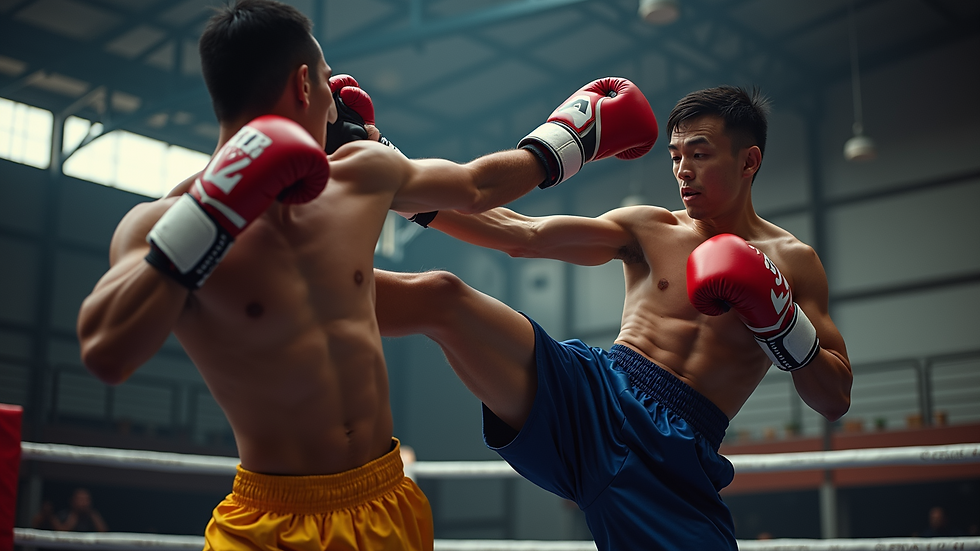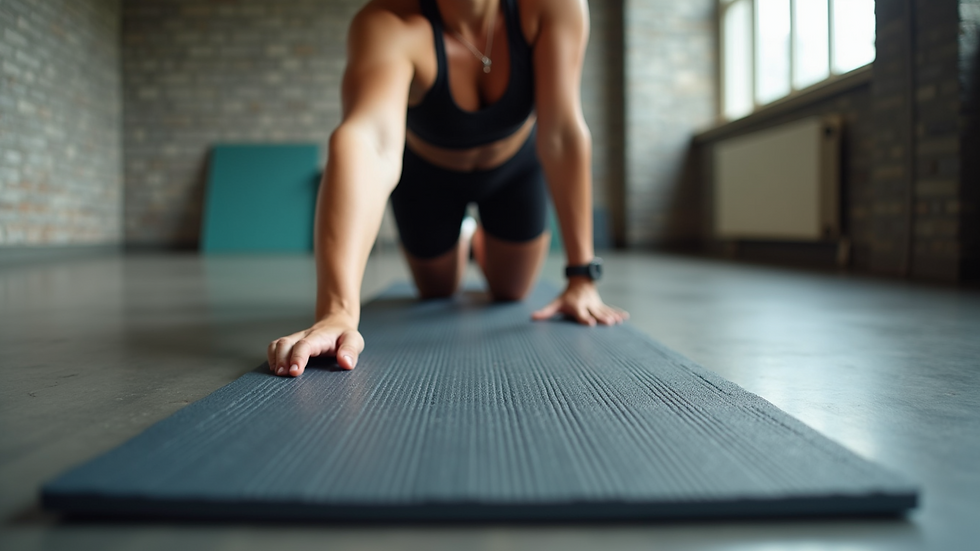Unlocking Potential: The Transformative Role of Flexibility in Kickboxing Performance
- kennyherrholz

- Jun 25
- 4 min read
Kickboxing is not just about brute strength. It requires a delicate balance of strength, speed, and agility. One of the most critical yet often overlooked factors in kickboxing is flexibility. Flexibility is essential for enhancing performance, preventing injuries, and improving overall technique. This article delves into how flexibility can take your kickboxing game to the next level, helping you realize your full potential as an athlete.
The Importance of Flexibility in Kickboxing

Flexibility refers to the range of motion in your joints and muscles. In kickboxing, improved flexibility allows fighters to execute techniques with greater ease and effectiveness. Flexible muscles can move more freely, which is crucial for performing powerful kicks, precise punches, and agile movements during matches.
Moreover, flexibility is vital for preventing injuries. Research shows that athletes with good flexibility are 40% less likely to suffer from muscle strains and tears. Regularly including flexibility exercises in your training can enhance muscle elasticity and joint stability.
Additionally, better flexibility can speed up recovery times after training sessions. A study found that flexible muscles can recover 30% faster after intense workouts compared to tight muscles, allowing athletes to train harder and more consistently.
Types of Flexibility Relevant to Kickboxing
Understanding the various types of flexibility can help kickboxers enhance their performance. Here are the three main types that can be particularly beneficial:
Dynamic Flexibility
Dynamic flexibility involves moving different parts of your body through their full range of motion. This aspect is critical for warming up before fights and training. Dynamic stretches, such as leg swings and torso twists, prepare the body for explosive movements, like high kicks and quick pivots, while increasing heart rate and blood flow.
Static Flexibility
Static flexibility is the ability to stretch a muscle to its furthest point and hold that position. Common examples include reaching for your toes or holding a split. These stretches are beneficial after training sessions. They promote muscle recovery and help in elongating the muscle fibers.
In relation to kickboxing, improving static flexibility can significantly impact your kicking techniques. For instance, better flexibility can lead to a 20% increase in kicking height and precision, especially for roundhouse and head kicks.
Functional Flexibility
Functional flexibility combines dynamic and static stretching, specifically tailored for the movements in kickboxing. It not only enhances the range of motion but also ensures that strength and stability are maintained during those movements.
This type may include sport-specific drills, such as practicing kicks with resistance or engaging in movements that simulate fight techniques like dodges and slips.
How Flexibility Improves Kickboxing Techniques
Improved flexibility can enhance various kickboxing techniques in remarkable ways. Here are the specific benefits:
Kicking Techniques
Kicking is a fundamental aspect of kickboxing. Greater flexibility in your hips can make high kicks seem effortless. Flexible hamstrings, quadriceps, and hip flexors directly influence your kick height and precision. For example, achieving a high roundhouse kick requires flexibility; it determines how far you can lift your leg without compromising your technique.
Defensive Maneuvers
Flexibility plays a crucial role in defensive movements like slipping and bobbing. These evasive actions help fighters avoid strikes. A flexible body can maintain balance during these movements, making it challenging for opponents to make contact. Studies show that fighters with enhanced flexibility can react up to 25% faster in defensive situations, improving their chances of avoiding attacks.
Footwork and Mobility
Footwork is essential in kickboxing. Improved flexibility leads to better mobility, allowing you to move swiftly in multiple directions. Flexibility in your ankles and hips facilitates fluid movements while maintaining balance. Enhanced flexibility enables you to pivot quickly and angle away, improving your positioning for offense and reducing vulnerability to counterattacks.
Incorporating Flexibility Training Into Your Routine

To fully benefit from flexibility in kickboxing, it is important to weave flexibility training into your regimen. Here are practical strategies to enhance flexibility:
Warm-Up Routine
Incorporating a dynamic warm-up routine before training is vital. This may include high knees, butt kicks, and various dynamic stretches. These exercises increase blood flow to muscles and prepare them for intense activity.
Post-Training Stretching
After workouts, dedicate time to static stretching to aid recovery. Focus on major muscle groups, including hamstrings, hip flexors, and shoulders. Gentle stretches should be held for about 20 to 30 seconds, allowing muscles to relax and elongate.
For instance, holding a standing quad stretch for 30 seconds can significantly improve your hamstring flexibility over time, leading to better kick performance.
Rethinking Training and Performance
Flexibility is a game-changer in kickboxing that can greatly enhance athletic performance. By improving kicking techniques, defensive maneuvers, and footwork, flexibility becomes a powerful asset in your training toolkit.
Regularly including flexibility training in your kickboxing routine will not only improve your performance but also help prevent injuries and facilitate quicker recovery times. As you integrate flexibility into your practice, you unlock new potential, elevating your kickboxing journey.
Prioritize flexibility in your training. You'll likely see improvements in your skill and overall engagement with the sport. The move toward maximizing your kickboxing potential begins with one simple yet powerful element: flexibility.



